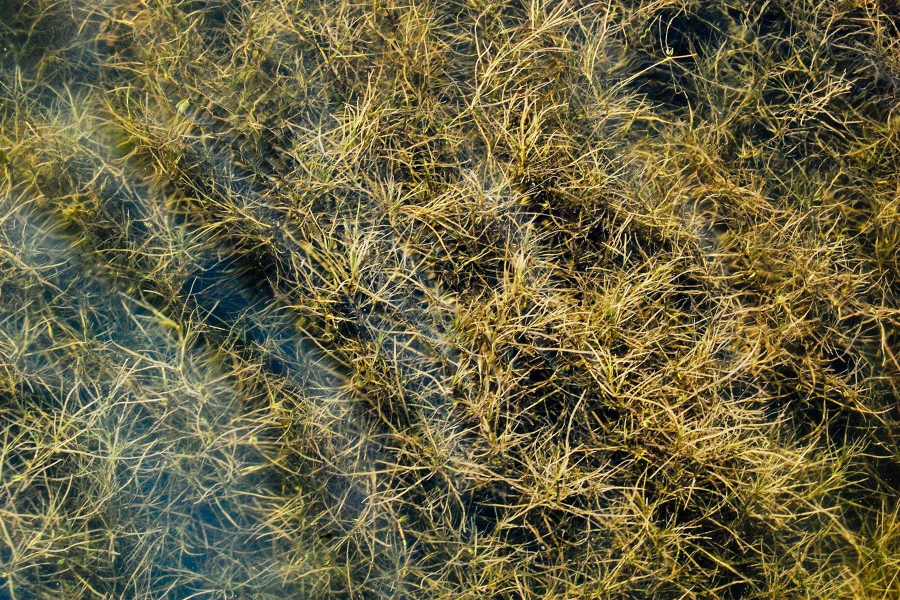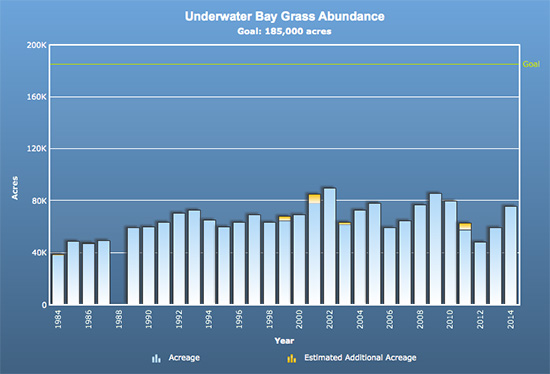Chesapeake Bay’s underwater grass abundance rises 27 percent in 2014
Widgeongrass grows where vegetation was not mapped before

Between 2013 and 2014, underwater grass abundance in the Chesapeake Bay rose 27 percent, marking a 27,600-acre increase from the last decade’s low and an achievement of 41 percent of our 185,000-acre goal.
Scientists attribute this boost in bay grasses to the rapid expansion of widgeongrass in moderately salty waters, even in areas where vegetation has not been observed before. Scientists have also observed a modest recovery of eelgrass in very salty waters, where the hot summers of 2005 and 2010 led to dramatic diebacks.
“This data offer hope to those of us who have watched these grasses decline in our lifetime,” said Virginia Institute of Marine Science Professor Robert J. Orth in a media release. “As efforts to clean up the Chesapeake Bay continue, these plant populations can rapidly recover. We cannot give up on our efforts to improve water quality, because there are plants and animals that depend on us to make this happen.”

Underwater grass beds are critical to the Chesapeake Bay ecosystem. They offer food to small invertebrates and migratory waterfowl; shelter young fish and blue crabs; and keep our waters clear and healthy by absorbing excess nutrients, trapping suspended sediment and slowing shoreline erosion. For these reasons, the Chesapeake Bay Program has committed to achieving and sustaining 185,000 acres of underwater grasses in the Bay, with a target of 90,000 acres by 2017 and 130,000 acres by 2025. “
“Every additional acre of underwater grasses measured in 2014 indicates improved water clarity and improved wildlife habitat,” said Maryland Department of Natural Resources Biologist and Submerged Aquatic Vegetation Workgroup Co-Chair Brooke Landry. “This [increase in underwater grasses] shows that restoration efforts are working and, if we stay the course, we could be successful in reaching our long-term goals. These data also highlight the importance and value of the Submerged Aquatic Vegetation monitoring program. Without it, measuring our progress towards a restored Bay would be infinitely more difficult, so I thank the Virginia Institute of Marine Science for providing such vital information.”
Underwater grass abundance is estimated through aerial surveys flown from late spring to early fall. Abundance is mapped in four different salinity zones, each of which is home to an underwater grass community that responds differently to strong storms, drought and other growing conditions.

Comments
There are no comments.
Thank you!
Your comment has been received. Before it can be published, the comment will be reviewed by our team to ensure it adheres with our rules of engagement.
Back to recent stories